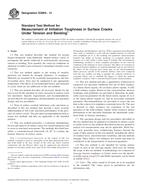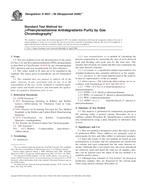1.1 This test method covers the determination of additive elements, wear metals, and contaminants in used lubricating oils by inductively coupled plasma atomic emission spectrometry (ICP-AES). The specific elements are listed in .
1.2 This test method covers the determination of selected elements, listed in , in re-refined and virgin base oils.
1.3 For analysis of any element using wavelengths below 190 nm, a vacuum or inert-gas optical path is required. The determination of sodium and potassium is not possible on some instruments having a limited spectral range.
1.4 This test method uses oil-soluble metals for calibration and does not purport to quantitatively determine insoluble particulates. Analytical results are particle size dependent, and low results are obtained for particles larger than a few micrometers.
1.5 Elements present at concentrations above the upper limit of the calibration curves can be determined with additional, appropriate dilutions and with no degradation of precision.
1.6 For elements other than calcium, sulfur, and zinc, the low limits listed in and were estimated to be ten times the repeatability standard deviation. For calcium, sulfur, and zinc, the low limits represent the lowest concentrations tested in the interlaboratory study.
1.7 The values stated in SI units are to be regarded as the standard. The values given in parentheses are for information only.
This standard does not purport to address all of the safety concerns, if any, associated with its use. It is the responsibility of the user of this standard to establish appropriate safety and health practices and determine the applicability of regulatory limitations prior to use.
Product Details
- Published:
- 11/01/2005
- Number of Pages:
- 8
- File Size:
- 1 file , 110 KB
- Redline File Size:
- 2 files , 200 KB


